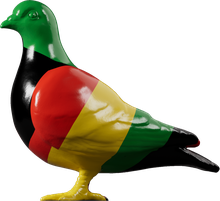Saxon & Medieval — Late Medieval; 15th-early 16th century
Holy Blood of Wilsnack
Part of a pilgrim badge from the shrine of the Holy Blood at Wilsnack in Germany. The village became a pilgrimage destination for around 100,000 pilgrims a year after it burnt down in 1383. The parish priest said that he had found three untouched hosts (circular wafers taken during Holy Communion) in the ruins of the village church. These were stuck together and were marked with drops of blood. Miracles were soon associated with the bleeding hosts and pilgrims came to see the Holy Blood. Badges were made as souvenirs – these depicted the hosts as three connected roundels containing scenes of the Flagellation of Christ, the Crucifixion and the Resurrection. Only one of the roundels has survived on this badge, which is rather damaged but appears to depict the Resurrection.
- Category:
- Saxon & Medieval
- Object ID:
- 87.224/1
- Object name:
- Holy Blood of Wilsnack
- Object type:
- Artist/Maker:
- —
- Related people:
- Related events:
- Related places:
- Production date:
- Late Medieval; 15th-early 16th century
- Material:
lead alloy
- Measurements/duration:
- DM 15 mm (overall)
- Part of:
- —
- On display:
- —
- Record quality:
- 100%
- Part of this object:
- —
- Owner Status & Credit:
Permanent collection
- Copyright holder:
digital image © London Museum
- Image credit:
- —
- Creative commons usage:
- —
- License this image:
To license this image for commercial use, please contact the London Museum Picture Library.

